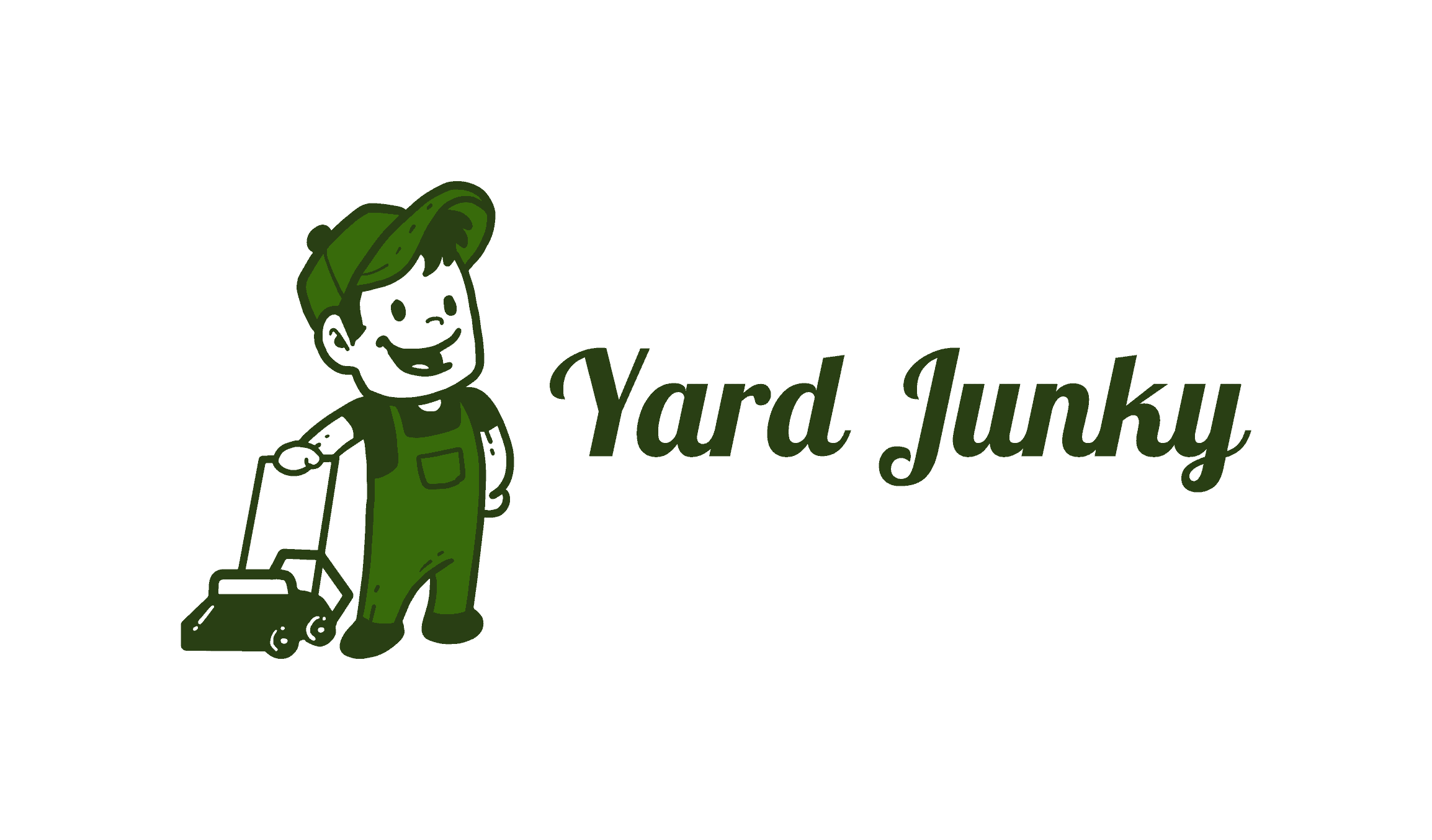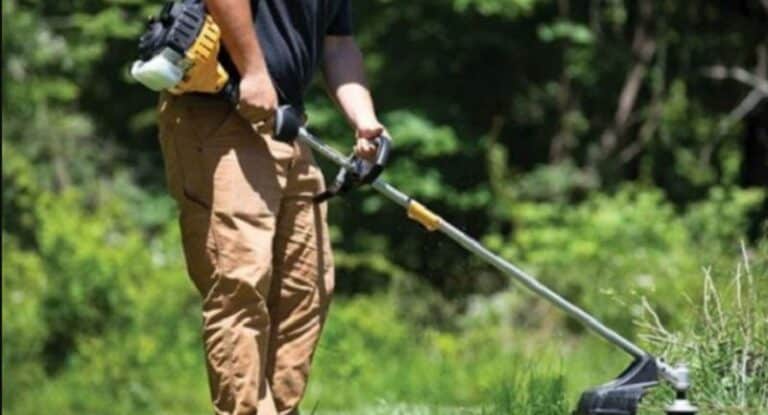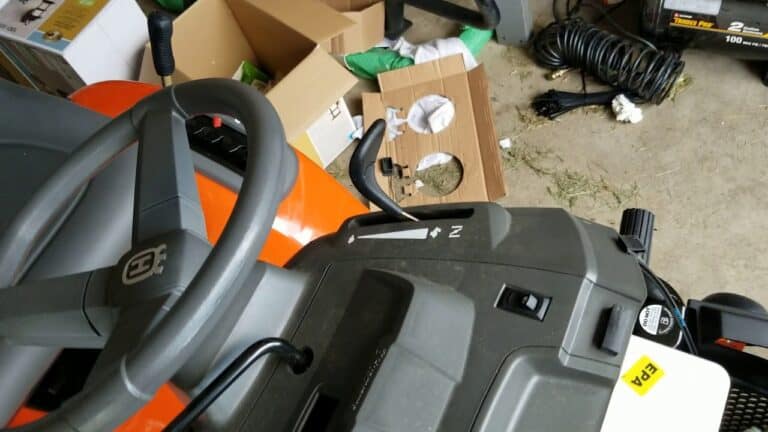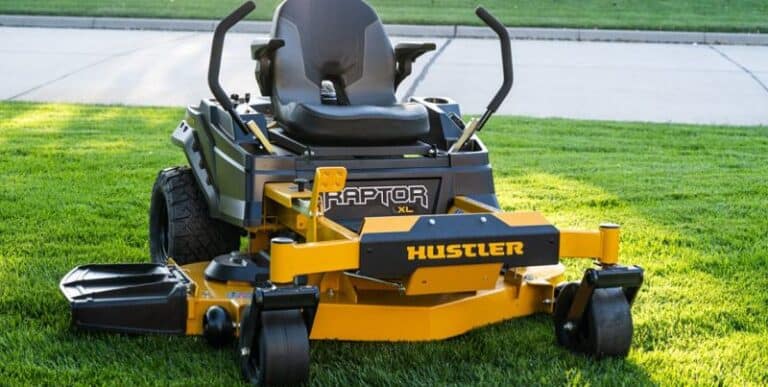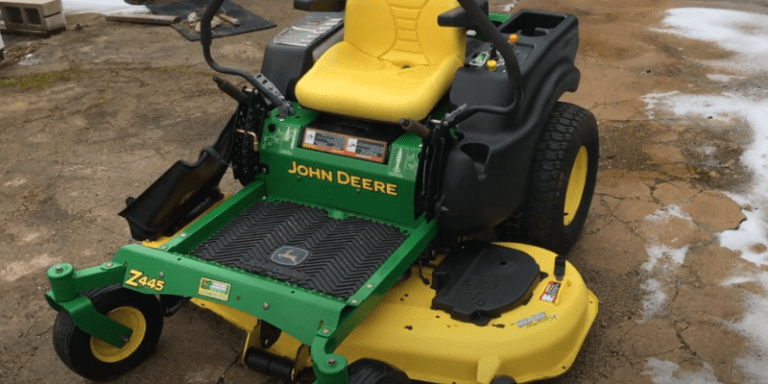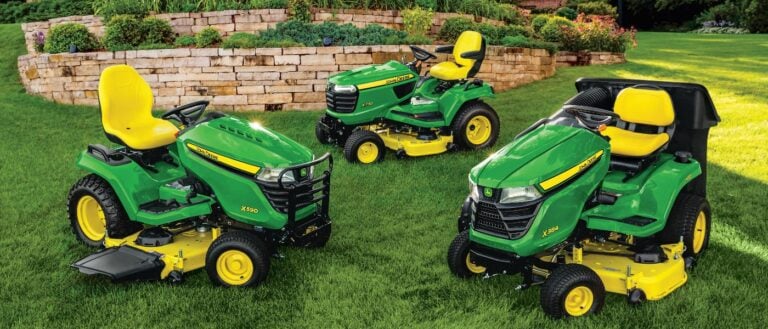How To Keep Grass Out Of Mulch When Mowing
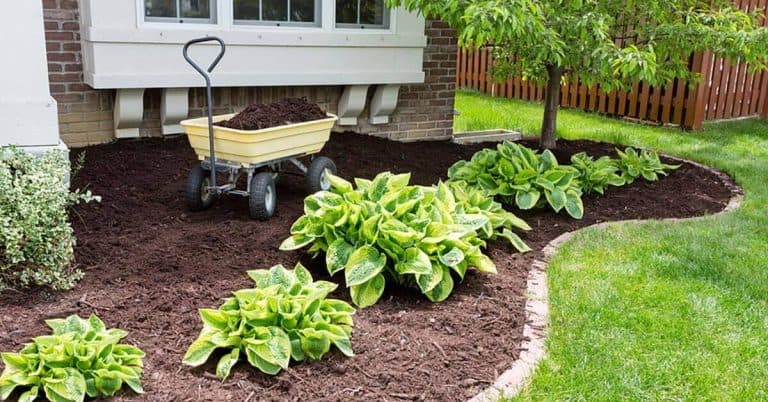
Regular mowing is a great way to keep your lawn healthy. Mowing can strengthen your grass and remove pests from your lawn. Unfortunately, if you’re not careful, the grass clippings from mowing can easily wind up in your mulch beds.
How can you keep grass out of mulch when mowing?
There are plenty of ways to keep grass clippings from getting into your mulch, including protecting your mulch beds and changing your mowing technique. There are a variety of tools and accessories that can help you keep grass out of mulch beds, but you can also deal with clippings using supplies you have at home.
If you’re constantly dealing with grass clippings in your mulch beds, give these simple solutions a try.
Mow In the Opposite Direction of Your Mulch Beds
Many lawnmowers have a side discharge system that blows grass clippings onto the lawn as you mow. While these mowers are able to quickly and cleanly cut grass, they can also spray clippings straight into your mulch beds.
Thankfully, you can easily resolve this problem by switching the direction you’re facing as you mow your lawn. Make sure that the discharge system is always on the opposite side of your mulch beds.
If clippings are still making their way into your mulch beds, you can also try adjusting the angle of your mower’s discharge chute. Pointing the discharge chute towards the ground can prevent clippings from being blown several feet away.
You can take a similar approach when you’re trimming the edge of your mulch beds. Check the spin of your trimmer to see which direction the clippings are being flung in.
If the trimmer spins clockwise, make sure your mulch beds are on your left side as you trim. For a trimmer that spins counter-clockwise, keep your mulch beds on your right side.
Quickly Clean Up Clippings with a Lawn Sweeper Attachment
Mowing in the right direction won’t always be enough to keep grass clippings out of your mulch bed. On a windy day, clippings could be blown into your mulch before you have the chance to rake. If this is an issue for you, a lawn sweeper attachment can help you clean up clippings right away.
Lawn sweepers use high-velocity brushes to sweep through your lawn and clear away grass clippings. The clippings are transferred into a bag or container so that they can be disposed of later on.
Typically, lawn sweeper attachments are designed to be pulled behind riding lawnmowers. If you can’t find a sweeper attachment that’s compatible with your lawnmower, a leaf bag attachment can also help you to clean up clippings before they blow into your mulch bed.
While these attachments make it easy to clear away grass clippings, you should keep in mind that removing clippings isn’t necessarily the best option for your lawn. When you leave clippings on your lawn, they’ll eventually decompose. This will provide the soil with water and valuable nutrients.
Thankfully, you can get around this problem by sprinkling the clippings you remove back onto your lawn. This is an additional step, but the benefits that clippings offer are worth the extra effort. As long as you keep a safe distance between your clippings and your landscaping beds, you should be able to keep them out of your mulch.
Install a Chute Blocker on Your Mower
If you can’t seem to control the direction that grass clippings blow in, you may want to keep them from blowing onto your lawn at all. Chute blockers are a lawnmower accessory that’s designed to block the chute that normally expels clippings. They’re sometimes referred to as operator controlled discharge chutes (OCDC).
A chute blocker is essentially an alternative to a side discharge chute for a lawnmower. You can remove the discharge chute from your lawnmower and replace it with a chute blocker. Not only can this help keep grass out of your mulch beds, but it can also prevent other types of debris, like rocks, from flying around as you mow.
Many chute blockers are designed to be operated with a lever or pedal. This allows you to lower or raise the blocker as needed. Once a blocker is installed, you can keep your discharge chute sealed shut when you’re near your landscaping beds, then open it up while you mow the rest of your lawn.
Start Edging Your Mulch Beds
If you’ve been trying to figure out how to keep grass out of mulch when mowing, and your strategies haven’t delivered great results, you may want to create a barrier between your mulch beds and the rest of your lawn. You can do this by creating natural edges around your mulch beds.
Not only can edging keep out clippings, but it can enhance the look of your landscaping. Edging creates a clean border that separates different parts of your garden. In addition to being visually appealing, edging provides a barrier for plant roots, which can prevent flowering plants from growing on your lawn.
While edging can be a time-consuming project, it’s something you can easily do on your own with the proper tools. Make sure you mow your lawn before hand and plan out the areas that you want to define. You can outline your borders by using a garden hose, tape, planks of wood, or by using a type of nylon string that’s sometimes referred to as builder’s line.
Use a Builder’s Line
“One of the easiest ways to get a straight edge whenever you’re edging lawns is to use a builder’s line,” says lawn care expert Robbie Lynn. “A half-moon edging iron and a line is an absolutely fantastic way to get a lovely crisp, clean edge.”
Once you’ve marked your path, you can select a tool to create your edges. While you can use tools designed for edging, like an edging iron, you can also get great results with a garden shovel. Just use the shovel to cut into the ground and carve out an edge.
Another option is to use some sort of power edger, such as a string trimmer. These kinds of power tools won’t give you the same control you’d get from a manual tool, but they’re a much faster way to create edges.
After you’ve finished carving out your edges, you can install a garden border. While there are many types of borders to choose from, a taller border, such as paving stones or a decorative fence, will be more effective at keeping out clippings.
Cover Your Mulch Bed with Landscaping Fabric
Another effective way to protect your mulch beds from clippings is to cover them with landscaping fabric before you mow your lawn. Sometimes referred to as garden fabric, landscaping fabric is made from water-permeable materials like linen or polypropylene.
Landscaping fabric is typically used for weed control, but it can also function as a protective barrier. Since it’s designed to be placed over plants, it shouldn’t cause any damage to your mulching bed.
When you’re ready to mow, cover your entire mulch bed with landscaping fabric. Place something heavy, like bricks or concrete blocks at the fabric’s edge to keep it in place. Once you’ve done mowing, you can remove the fabric and store it until you’re ready to mow again.
“Another solution to this is to lay down pieces of cardboard from boxes,” says professional landscaper Jim Putnam. “Or you can put down several layers of newspaper.”
Like landscaping fabrics, cardboard and newspaper are water permeable. In fact, newspaper is frequently used as mulch in garden beds! If you do decide to use these materials, it’s best to put down a few layers to ensure that your mulch beds are fully protected.
You can also use a tarp as a makeshift barrier. While a tarp won’t necessarily let water through, it shouldn’t damage your mulch beds as long as you remove it quickly.
No matter what kind of barrier you use, remove it slowly and carefully. Make sure that the clippings you’ve collected wind up on your lawn and not in your landscaping beds.
Use a Leaf Blower to Blow Grass Clippings Out of Your Mulch Beds
There are plenty of ways to keep grass out of mulch when mowing, but if clippings do wind up in your landscaping beds, there are also ways to get them out. As long as you’re careful, you can use a leaf blower to push clippings out of your mulch bed and onto your lawn.
Avoid angling your leaf blower directly towards your mulch; this can blow mulch away along with clippings. Instead, aim the blower so that the air flow’s over your mulch’s surface. Since grass clippings are so lightweight, this should be enough to blow them in the other direction.
If your leaf blower is too powerful, try using it while it’s idling. The device won’t actually be blowing the clippings away. However, the force from idling can still push clippings out of your mulch beds.
You can also read:
